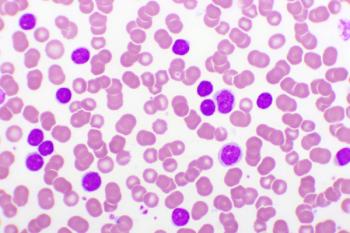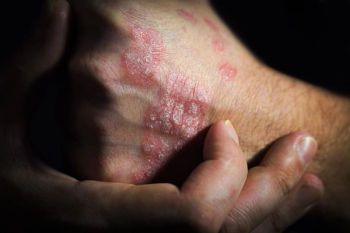
ERS Recap: The Role of Empathy, Shared Decision-Making in Modern Respiratory Care
Key Takeaways
- Empathy, education, and shared decision-making are crucial for enhancing respiratory care communication.
- Culturally sensitive, individualized communication and patient expertise are vital for effective health care delivery.
Empathy and communication strengthen patient-provider relationships and improve respiratory care outcomes, as discussed at the European Respiratory Society (ERS) Congress.
Empathy, education, and shared decision-making are at the heart of improving respiratory care, according to a diverse panel of clinicians and patient advocates who discussed strategies to enhance patient-clinician communication during the
The session, titled “Bridging the communication gap,” highlighted the transformative power of patient expertise and culturally sensitive communication in delivering patient-centered care.
Phil Taverner, a member of the European Lung Foundation (ELF) Aspergillosis Patient Advisory Group, opened the discussion by framing the conversation around the need to bridge gaps in communication between clinicians and patients. He emphasized that fostering dialogue requires recognizing patients not only as recipients of care but also as informed participants in decision-making.
Experiences of Expert Patients
Dominique Hamerlijnck, a patient advocate with severe asthma and irritable bowel syndrome from the Netherlands, shared her experience navigating complex care. By understanding her condition and its management requirements, she was able to successfully advocate for her medication. “Basically, every patient is an expert on their own disease. But you might need to ask them questions and really listen, because they will not explain it in what us clinicians have as a sort of checklist, but they will explain, in their own way, what their symptoms are, and I think that's very important,” she explained, underscoring the value of patient knowledge in influencing clinical decisions.
Eliza Kompatsiari, a criminal lawyer from Thessaloniki, Greece, who has lived with asthma for more than two decades and bronchiectasis for 14 years, described her journey from being uninformed about her conditions to becoming an expert patient. She stressed that empowerment through knowledge not only improves self-management but also enhances collaboration with health care providers. “Form patient unions. This really helps you get information, keep updated, get together with other people that really can understand your condition, and feel empowered, and I think that it's the best way also to advocate, you know, as part of a community, instead of as a single person,” Kompatsiari said.
Lisa McNeil, a UK-based patient advocate for aspergillosis, reinforced the necessity of collaboration between clinicians and patients, noting that many expert patients attain their expertise out of necessity—often to navigate challenges in health care relationships and access to treatment. “Shared decision-making and respect for the expert patient in the collaboration just mean that the relationship is formed between you and your clinician, and I think that just leads to better outcomes for everyone,” McNeil emphasized.
Challenges for Clinicians With Expert Patients
Clinicians face unique challenges when interacting with highly informed patients. Alyn Morice, MD, PhD, head of respiratory medicine at Hull York Medical School in the UK, highlighted the difficulties of managing conditions such as chronic cough, which are frequently misunderstood by health care providers. He suggested using ERS leaflets and educational materials to support clinicians. “Establishing that rapport with the doctor is absolutely vitally important. Don’t sort of question them. Say, look, you know, I really think that I have this genuine problem of hypersensitivity,” Morice said, stressing the importance of mutual trust and respect in patient-clinician interactions.
Amy Hai Yan Chan, PhD, associate professor and respiratory lead of the Medicines Intelligence Group at the University of Auckland School of Pharmacy in New Zealand, noted that expert patients can enhance patient-centered care. “Actually having an expert patient is a delight, actually. And in this day and age with patient-centered care, I think we have seen that shift in the paradigm of care... It’s building on the relationship, but a relationship can only work if it’s bi-directional communication,” she said, highlighting that patient knowledge can help tailor communication and treatment strategies while facilitating bi-directional information exchange.
Communicating With Patients With Lower Health Literacy
Effective communication also requires adapting strategies for patients with varying levels of health literacy. McNeil advised using clear, jargon-free language and breaking information into digestible segments. She highlighted a case with a patient in the early stages of dementia, where written and visual aids proved critical for comprehension. Taverner prompted discussion on how to ensure that patients understand key messages in time-limited consultations. Morice recommended the teach-back technique, in which patients repeat information in their own words, allowing clinicians to identify and address communication gaps.
Communicating sensitive health information requires a delicate balance of honesty and empathy. Kompatsiari discussed how to convey serious diagnoses without causing unnecessary panic, emphasizing the importance of training in communication skills. Hamerlijnck and McNeil agreed that patients often need follow-up support and repeated explanations to fully process difficult news. Hamerlijnck shared her own experience of feeling unsupported after receiving bad news, highlighting the necessity of ongoing patient education and empathetic engagement.
Cultural and Systemic Factors in Communication
The panel also explored how cultural and systemic factors influence patient-clinician communication. Hamerlijnck emphasized the role of community support and patient networks, which can differ across countries. Chan noted that language, cultural practices, and societal attitudes toward health care shape how patients process medical information. Morice and McNeil discussed the potential power imbalances between patients and clinicians in various health care systems, stressing that listening actively and respecting patient perspectives are crucial to effective care delivery.
Addressing Misinformation and Conspiracy Theories
In the age of digital health, misinformation poses a growing challenge. Hamerlijnck recommended providing patients with vetted, patient-friendly resources, while Morice emphasized acknowledging misinformation openly and directing patients to trusted sources. Chan reinforced the importance of fostering open dialogue, encouraging patients to share information they encounter online so it can be fact-checked collaboratively.
The session concluded with a discussion of actionable strategies to improve patient-clinician communication. Hamerlijnck stressed listening to patients and recognizing their expertise. Kompatsiari advocated for forming patient unions and communities to empower individuals and facilitate knowledge sharing. McNeil highlighted that respecting expert patients and prioritizing shared decision-making strengthens relationships and leads to better outcomes.
Panelists provided several concrete recommendations: clinicians should encourage open dialogue, provide patients with trustworthy resources, and support patient-led communities. Shared decision-making should be central to care, acknowledging the expertise that patients develop through lived experience. Across conditions and cultures, empathy, clarity, and collaboration emerged as universal principles for bridging communication gaps and improving respiratory care—messages that resonated throughout the ERS Congress.
Speakers highlighted strategies such as the teach-back method, use of visual aids, and digital tools to enhance understanding, while also addressing barriers like low health literacy, hierarchical health care structures, and misinformation. Across diverse perspectives, a unifying message emerged: bridging the communication gap requires empathy, mutual respect, and genuine partnership between patients and clinicians.
Newsletter
Stay ahead of policy, cost, and value—subscribe to AJMC for expert insights at the intersection of clinical care and health economics.












































